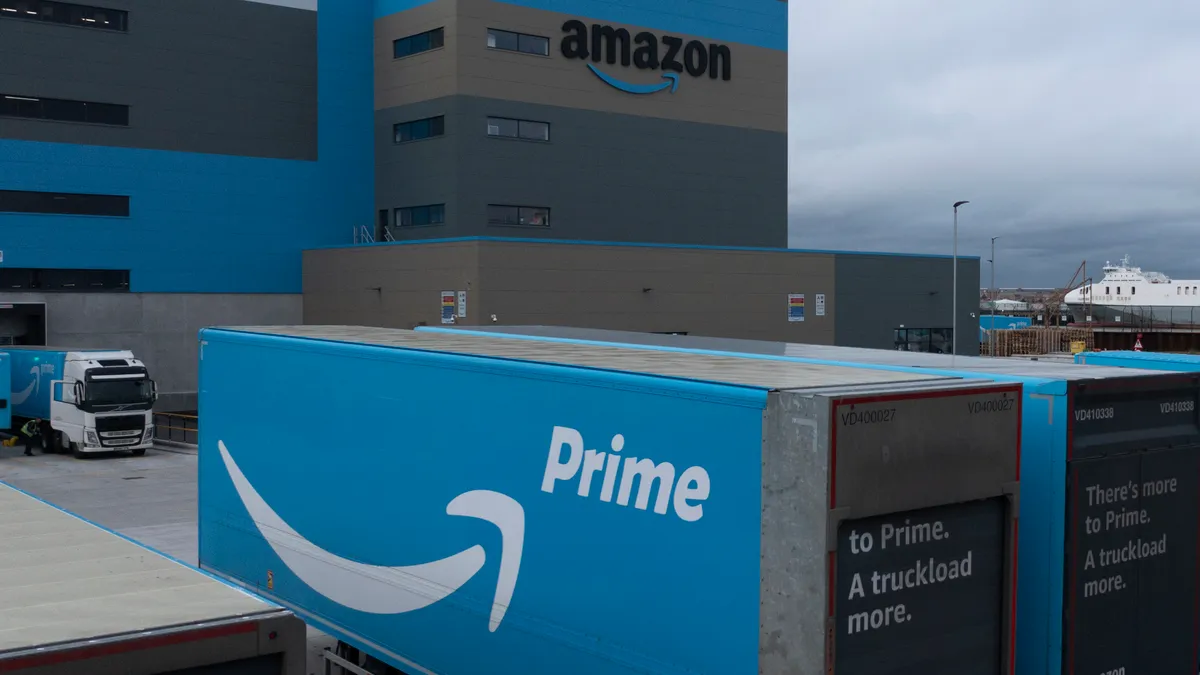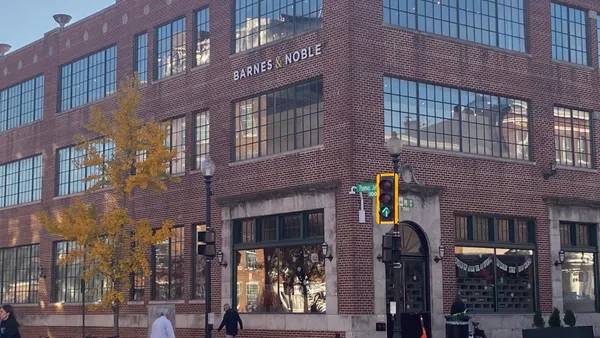Dive Brief:
- Amazon's operating environment has become increasingly complex, with the end of stimulus payments this year and turmoil in Europe potentially weighing on revenue, and spiking oil prices adding costs, according to Rohit Kulkarni, managing director with MKM Partners.
- At the same time, Amazon could benefit from raising prices on Prime and a fuel surcharge on third-party sellers using its fulfillment services, Kulkarni explained in a research note. Inflation on items sold could also add revenue from Amazon's seller services.
- The analyst lowered MKM Partners' 12-month price forecast on Amazon's stock by $100 a share.
Dive Insight:
Kulkarni pointed to the many "moving parts" in Amazon's business and the environment it is operating in today, as the war in Ukraine, protracted supply chain bottlenecks and inflation meet with the e-commerce juggernaut's own business. The latter continues to grow in complexity as Amazon adds services, capacity, revenue streams and a movie studio (specifically the MGM acquisition).
In the early phases of the pandemic, Amazon realized three years' worth of growth in 15 months, CEO Andy Jassy pointed out in his first letter to shareholders as the company's chief. The company also doubled the capacity of its fulfillment network, which took 25 years to build out, over the course of the past two years.
Jassy described 2021 as a "crazy and unpredictable year." The current year is turning out to be no more predictable, given Russia's invasion of Ukraine, continued inflation and a consumer whose habits and attitudes toward the pandemic are still evolving. More in-person shopping, more spending on experiences, a more inflation-wary consumer and the wind-down of stimulus could all weigh on Amazon's revenue.
At the same time, the company — now a formidable logistics provider — faces rising oil prices, which Kulkarni estimated could make for a $4 billion hit to Amazon's operating income in the first half of the year. Meanwhile, 300,000 new employees in 2021 and additional cash compensation are also raising costs, though the company may spend $8 billion less on COVID-19-related costs, according to Kulkarni.
The analyst also highlighted potential costs from unionization among Amazon's workers. The drive to unionize has grown among the ranks of Amazon's warehouse workers, with a union forming earlier this month for the first time at an Amazon warehouse in New York.
A union vote at a second facility in New York is coming up. Another petition for a union vote, in New Jersey, was recently withdrawn for unclear reasons, according to media reports. A second attempt to form a union at a facility in Alabama failed, though objections filed by union organizers are still in process.













